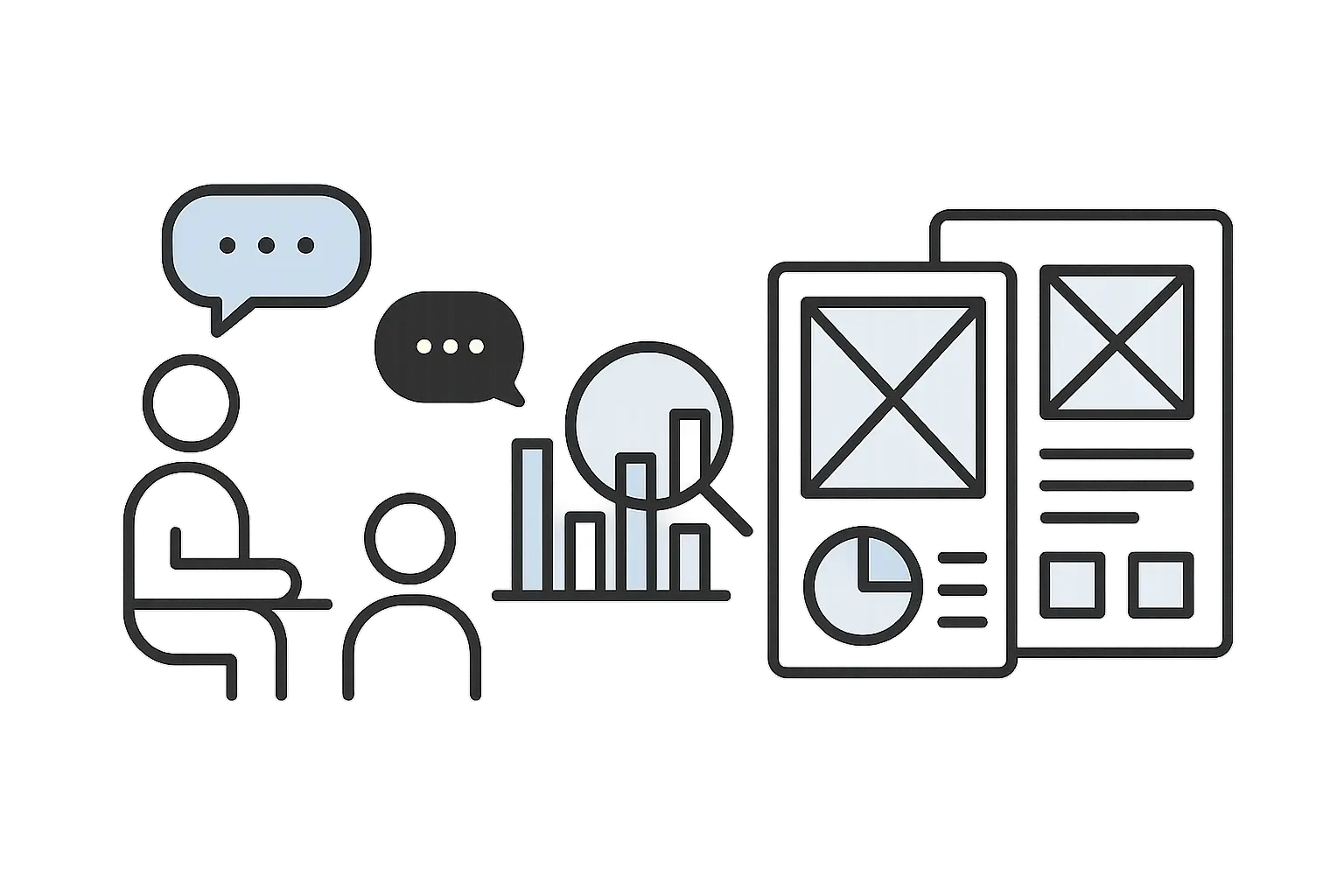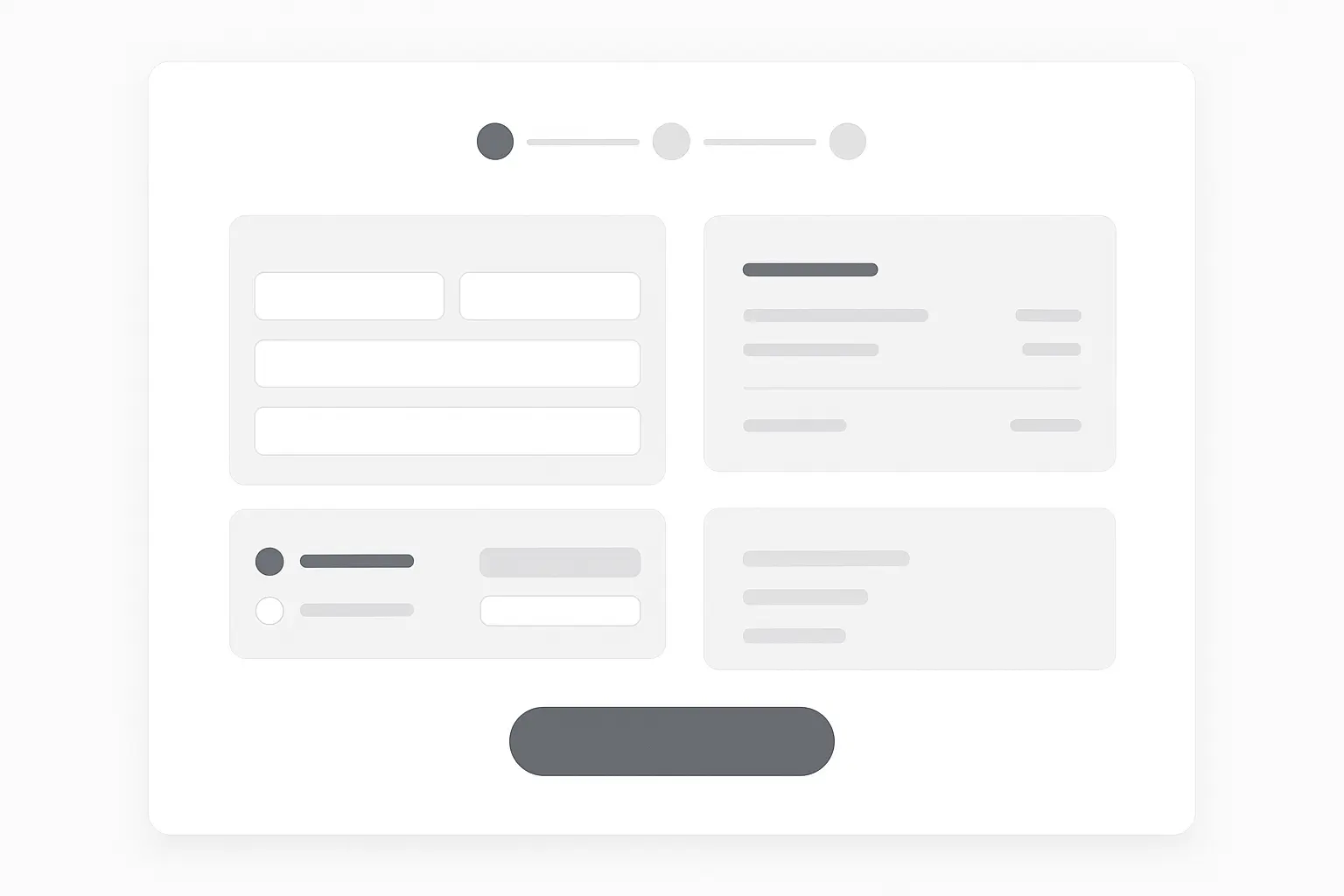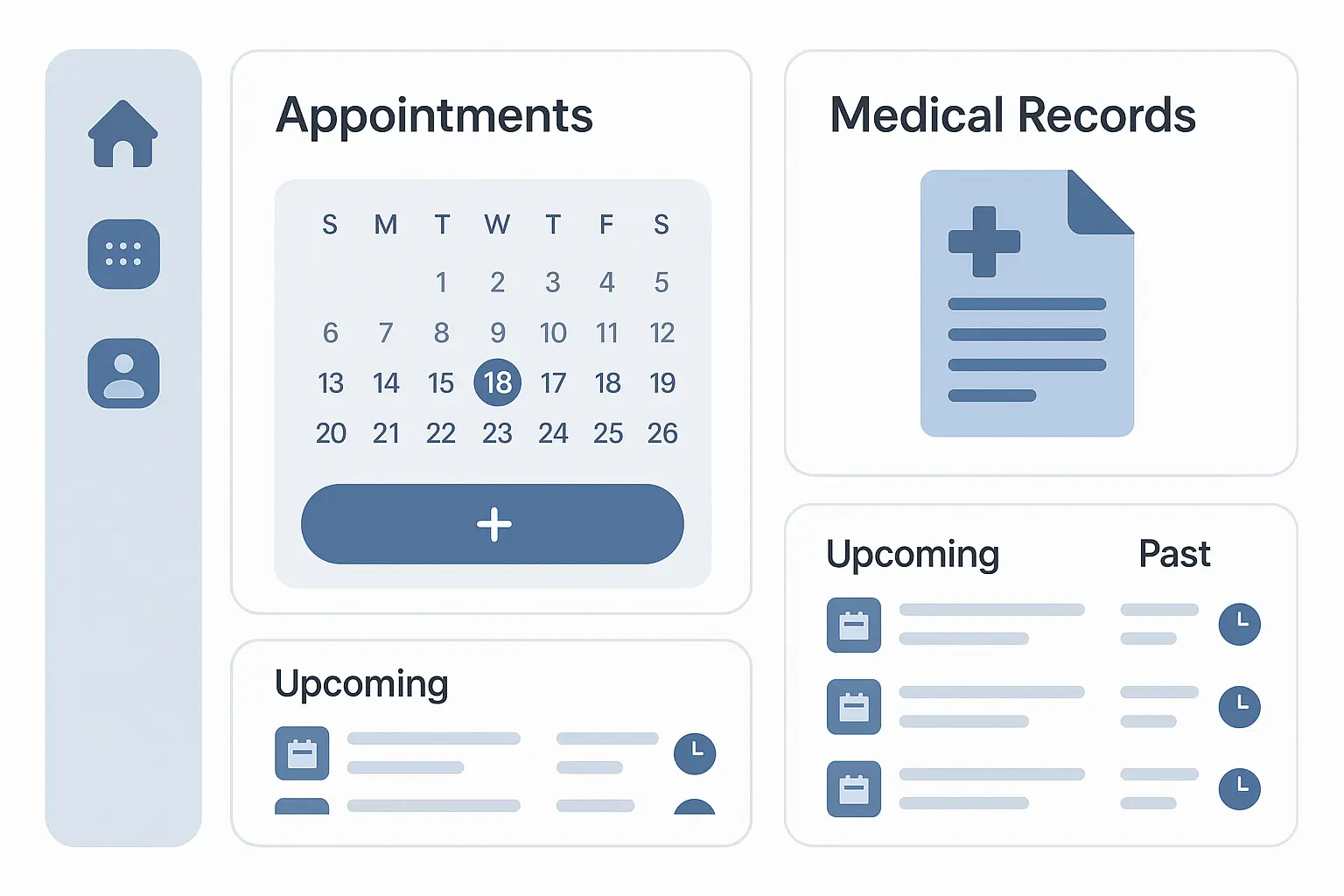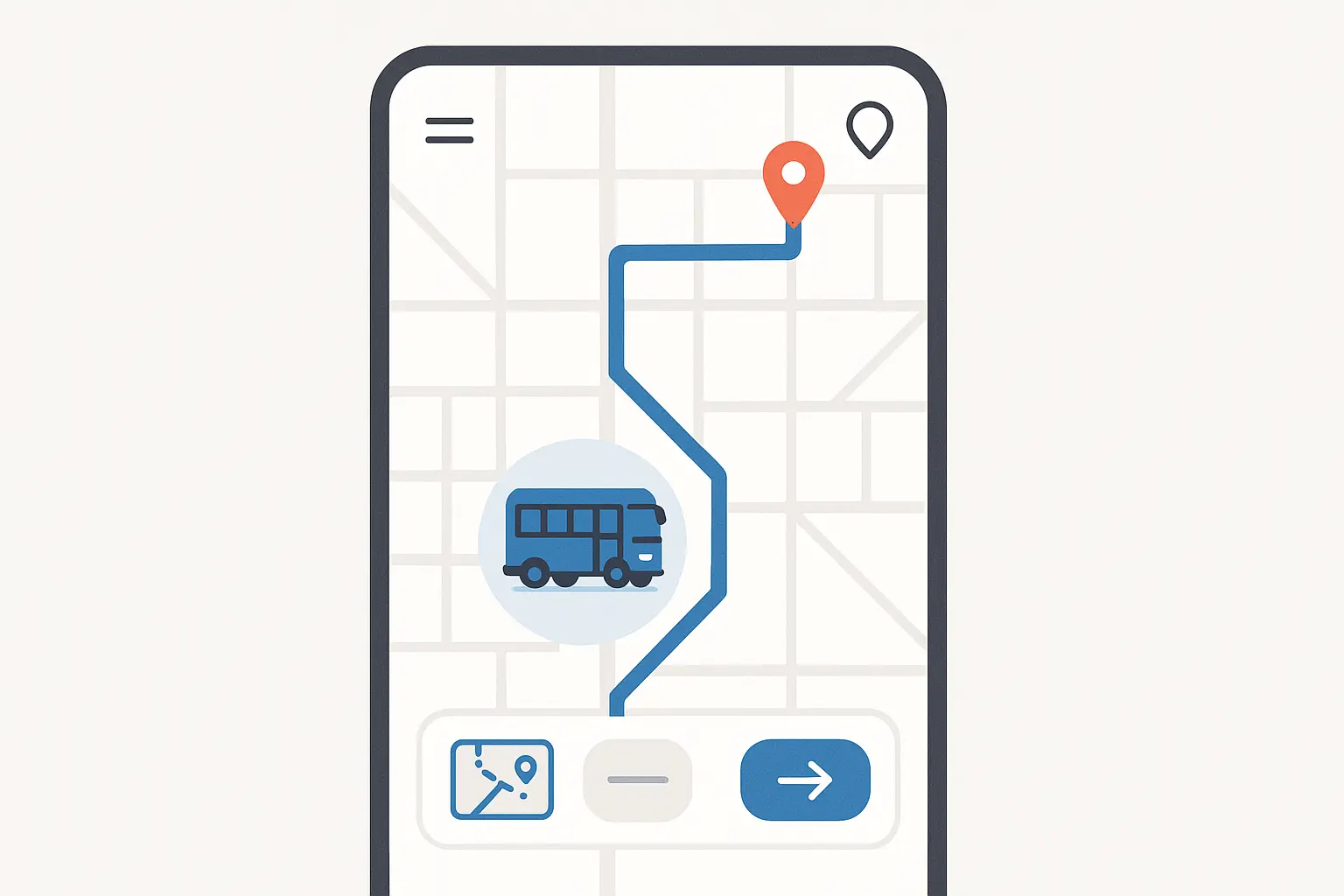I came across this stat a while back that completely changed how I think about UX design – apparently every dollar invested returns about $100 according to Baymard Institute research. That’s a 9,900% ROI, which honestly sounds too good to be true, but the source seemed legit.
What got me wasn’t just the number though. It was realizing that the companies hitting these returns weren’t just making prettier buttons. They were completely rethinking how people actually use their products. And some of them literally reshaped entire industries in the process.
I’ve been diving deep into these success stories lately – probably more than I should admit – because I wanted to understand what separates the companies that nail UX from the ones that just… don’t. These aren’t just design portfolios. They’re blueprints for turning user research into serious business results. From checkout flows that saved millions in abandoned carts to interfaces that made complex financial stuff accessible to regular people, these case studies show what happens when you actually listen to users.

Table of Contents
-
How to Spot Exceptional UX Case Studies
-
E-commerce & Retail Transformations
-
Shopify’s Checkout Revolution
-
Amazon’s One-Click Innovation
-
Airbnb’s Discovery Redesign
-
Etsy’s Mobile-First Approach
-
Warby Parker’s Virtual Try-On
-
-
Financial Services Breakthroughs
-
Robinhood’s Trading Simplification
-
Mint’s Financial Dashboard
-
Stripe’s Developer Experience
-
Cash App’s Social Payments
-
-
Healthcare & Wellness Solutions
-
Epic’s Patient Portal
-
Headspace’s Meditation Platform
-
Teladoc’s Virtual Consultations
-
Fitbit’s Activity Ecosystem
-
-
Enterprise & Productivity Tools
-
Slack’s Communication Revolution
-
Notion’s Flexible Workspace
-
Figma’s Collaborative Design
-
Zoom’s Meeting Simplification
-
-
Social Media & Communication Platforms
-
TikTok’s Algorithm-Driven Discovery
-
Discord’s Gaming Communities
-
LinkedIn’s Professional Network
-
WhatsApp’s Global Messaging
-
-
Transportation & Mobility Innovation
-
Uber’s Ride-Hailing Platform
-
Citibike’s Sharing System
-
Tesla’s Interface Design
-
Google Maps’ Navigation Evolution
-
-
What Makes These Case Studies Exceptional
-
Connecting UX Success to Marketing Performance
TL;DR
-
The best UX case studies aren’t just pretty portfolios – they show clear problems, real research, and actual business results that you can learn from
-
Companies like Shopify, Slack, and Warby Parker generated massive returns: $2.3M monthly revenue, $1.2M annual savings, and 64% fewer returns respectively
-
What works: treating UX like marketing – lots of user research, systematic testing, and measuring what actually matters
-
Industries from shopping to healthcare got completely transformed by companies that put user experience first instead of just following what everyone else was doing
-
Good UX directly impacts your marketing ROI – better experiences mean higher conversions, lower acquisition costs, and customers who actually stick around
How to Spot Exceptional UX Case Studies
When you’re hunting for ux case study examples that actually teach you something useful, you’ve got to look past the fancy screenshots and compelling stories. I’ve seen way too many “case studies” that are basically just portfolio padding.
The good ones start with problems that feel real. Not “users wanted a better experience” but specific pain points like “68% of people abandoned their cart at checkout” or “new users couldn’t figure out how to complete basic tasks.” You should be able to point to exactly what was broken and why it mattered.
What I’ve noticed is that the best teams don’t just assume they know what’s wrong – they actually go find out. We’re talking real user interviews, not just surveys. Competitive analysis that goes deeper than “here’s what our competitors do.” The kind of research that makes you go “oh, that’s why people hate this.”
|
Evaluation Criteria |
Weak Case Studies |
Strong Case Studies |
Exceptional Case Studies |
|---|---|---|---|
|
Problem Definition |
Vague assumptions |
Clear user pain points |
Data-backed problem statements with quantified impact |
|
Research Methodology |
Limited user feedback |
Multiple research methods |
Comprehensive user interviews, analytics, and competitive analysis |
|
Process Documentation |
Screenshots only |
Some methodology shown |
Complete design process with rationale for each decision |
|
Solution Innovation |
Following trends |
Solving specific problems |
Creating new patterns or approaches that others adopt |
|
Impact Measurement |
No metrics provided |
Basic before/after stats |
Quantified business outcomes with long-term tracking |
Process Transparency
Here’s what bugs me about most case studies – they make everything look smooth and inevitable. Like the team just had this brilliant insight and everything worked perfectly. Real projects are messy. Budgets get cut, timelines shift, stakeholders change their minds.
The case studies worth studying show you the actual methodology. Which research methods did they use and why? How did they recruit participants? What tools did they use? When I see a case study that acknowledges constraints and shows how they worked around them, I know I’m looking at something real.
Solution Quality & Innovation
Innovation doesn’t mean reinventing everything from scratch. Sometimes the most impactful solutions take existing UX principles and apply them in new ways. What matters is whether they can explain why they made specific design decisions and how those choices connect back to the original problem.
I get suspicious when every design choice looks perfect and there’s no mention of alternatives they considered or things that didn’t work. Good case studies show the thinking behind the visual decisions, not just the final pretty interface.
Impact Measurement
This is where you separate the real successes from the interesting experiments. I want to see numbers that matter to the business: conversion rates, task completion times, revenue impact, user satisfaction scores. And not just immediate results – what happened six months later?
The most convincing case studies show user validation throughout the process. Usability testing results, A/B test outcomes, post-launch feedback. They demonstrate that the solutions actually work in practice, not just in theory.

E-commerce & Retail Transformations
E-commerce UX transformations have some of the clearest business impact stories I’ve seen. When Shopify cut checkout abandonment by 23% or Warby Parker reduced returns by 64% with their AR try-on thing, you can directly connect the design changes to revenue. These aren’t vanity metrics – they’re numbers that actually matter to the business.
1. Shopify’s Checkout Revolution
I was shocked when I saw that Shopify was losing 68% of users at checkout. That’s not just a UX problem – that’s a business crisis. Most people were bailing when they hit the payment information step, which makes sense when you think about how stressful that moment is for users.
The research they did was pretty thorough – over 50 user interviews across different demographics, heat map analysis from more than 100,000 checkout sessions, and A/B testing 12 different variations over six months. That’s the kind of systematic approach that actually works, not just guessing what might be better.
Shopify’s Progressive Disclosure Strategy: Instead of hitting users with one massive form, they broke it into digestible chunks. First shipping info with smart address auto-complete, then payment details with trust badges right where people needed reassurance, then order confirmation with clear next steps. Each step built confidence while reducing the cognitive load, which is probably why they got that 23% reduction in abandonment.
Their solution focused on removing friction at every step. Single-page checkout with progressive disclosure, showing users only what they needed when they needed it. Trust signals appeared exactly where users typically hesitated. The guest checkout option eliminated the account creation barrier that probably stopped tons of potential customers.
The results speak for themselves: 23% reduction in checkout abandonment, 31% increase in mobile conversion rates, and $2.3 million in additional monthly revenue across the platform. Those are the kind of numbers that make executives pay attention to UX.
2. Amazon’s One-Click Innovation
Amazon’s one-click purchase system was so revolutionary they actually patented it. Think about how radical that was – eliminating the entire checkout process down to a single click. They figured out that every step between wanting something and buying it was an opportunity for people to change their minds.
This innovation was significant enough that Amazon licensed the technology to other companies. Sometimes the best UX solutions are the ones that seem obvious in retrospect but nobody thought to do first.
3. Airbnb’s Discovery Redesign
The transformation parallels insights from our Airbnb case study which explores how the company’s data-driven approach to user experience optimization drives both discovery and conversion.
Airbnb had this interesting challenge – people weren’t just booking rooms, they were trying to figure out if a neighborhood would work for their trip. The original search experience was too focused on property details when users needed context about the area and local experiences.
Their research was extensive – 500+ user interviews across 12 countries, analyzing search patterns and booking conversion data, plus ethnographic studies where they actually followed travelers during real trips. That last part is smart because people don’t always do what they say they’ll do in interviews.

The solution introduced neighborhood guides with local insights, visual search filters that actually made sense, and personalized recommendations based on previous bookings. The “Experiences” integration was brilliant – showing local activities near listings transformed Airbnb from just accommodation booking to complete travel planning.
Results included a 35% increase in booking conversion rates, 50% improvement in user session duration, and 28% growth in repeat bookings. The redesign positioned Airbnb as a comprehensive travel platform rather than just a place to find rooms.
4. Etsy’s Mobile-First Approach
Etsy recognized that their web-first experience wasn’t working on mobile, which is where more and more people were discovering handmade goods. The transformation emphasized visual discovery and seller stories, which makes sense for a platform built around unique, handmade products.
They redesigned the browsing experience to showcase what makes products special while streamlining the path to purchase. Not easy when you’re dealing with millions of unique items from individual sellers.
5. Warby Parker’s Virtual Try-On
Warby Parker had a huge problem – 40% return rate because people couldn’t tell if glasses would actually look good on them. That’s expensive for any business, but especially brutal for a direct-to-consumer company trying to compete with traditional retail.
Their research included surveys of over 2,000 customers about online eyewear shopping concerns, analysis of return reasons, and testing AR technology feasibility across different devices. Smart to validate the tech could actually work before building the whole experience around it.
The solution combined AR-powered virtual try-on with detailed size guides and face measurement tools. The social sharing feature was clever – letting customers get feedback from friends and family addressed the confidence issue that drives a lot of returns.
The impact was substantial: 64% reduction in returns due to fit issues, 89% increase in mobile app engagement, and 45% improvement in customer satisfaction scores. This ux design case study shows how emerging technology can solve traditional retail problems when you implement it thoughtfully.
Financial Services Breakthroughs
Financial services UX transformations are fascinating because they had to overcome decades of people thinking financial tools had to be complicated and intimidating. Robinhood attracted 10 million users in four years by making trading feel approachable, while Mint helped users save an average of $1,000 annually by making budgeting automatic. These companies proved that good design can make financial management accessible to regular people.
6. Robinhood’s Trading Simplification
Anyone who’s worked in fintech knows how hard it is to get people to trust you with money, so what Robinhood pulled off is actually insane. Traditional trading platforms were designed for professionals – complex interfaces, financial jargon everywhere, high fees that kept regular people out.
Robinhood’s research included interviews with 200+ millennial non-investors, competitive analysis of existing platforms, and usability testing with people who had never traded before. They discovered that most people were intimidated by the complexity, not necessarily uninterested in investing.
Their solution eliminated commission fees and simplified the interface using card-based design patterns people already understood from social media. They replaced financial jargon with plain language and integrated educational content right into the trading flow. The gamification elements like confetti animations were controversial, but they made investing feel approachable rather than scary.

The results were remarkable: 10 million users in the first four years, with 80% being first-time investors and $5.6 billion in funded accounts by 2018. Robinhood didn’t just create a better trading app – they expanded the entire market by making investing accessible to people who had never considered it before.
Some people argue that Robinhood’s gamification is actually problematic, and I get that concern. But the numbers show they succeeded in democratizing access to financial markets, which was their stated goal.
Financial App
|
Financial App |
Primary Innovation |
User Growth |
Business Impact |
|---|---|---|---|
|
Robinhood |
Commission-free trading with gamified UI |
10M users in 4 years |
$5.6B in funded accounts |
|
Mint |
Automated expense tracking and budgeting |
20M users in 5 years |
$1,000 average annual savings per user |
|
Stripe |
Developer-first payment APIs |
2M+ businesses |
Reduced integration time from weeks to hours |
|
Cash App |
Social peer-to-peer payments |
70M+ users |
$1.8B quarterly revenue |
7. Mint’s Financial Dashboard
Personal finance management was a mess – accounts scattered across different banks, credit cards, investment platforms. Most people had no idea where their money was actually going, which makes it pretty hard to make good financial decisions.
Mint surveyed over 3,000 users about financial tracking habits and analyzed spending categorization challenges. They found that people wanted to budget but found existing tools too complicated or time-consuming to maintain.
Their solution automated transaction categorization using machine learning, created visual spending trends with budget alerts, and implemented goal-setting tools with progress tracking. The credit score monitoring with improvement recommendations added another layer of financial awareness.
With 20 million registered users within five years, Mint helped users save an average of $1,000 annually through improved budget awareness. The 85% improvement in financial goal achievement rates shows how good UX can actually drive behavior change.
8. Stripe’s Developer Experience
It took me a while to understand why Stripe’s developer focus was such a big deal. Online payment processing was notoriously complex for developers, often requiring weeks of integration work and extensive documentation review. Most payment companies treated developers as an afterthought.
Stripe revolutionized this by making developers their primary customer. Clean APIs, comprehensive documentation, and a streamlined onboarding process that reduced implementation time from weeks to hours. The developer-first approach made payment integration so simple that it became a competitive advantage for businesses using Stripe.
9. Cash App’s Social Payments
Peer-to-peer money transfers traditionally felt formal and complicated – bank routing numbers, verification processes, the whole thing felt like work. Cash App redesigned money transfers to feel as simple as sending a text message.
They incorporated social elements that made payments feel natural and expanded into investing and banking services. The social approach to financial transactions created a new category of fintech applications focused on everyday money movement.
Healthcare & Wellness Solutions
Healthcare UX transformations have probably had the biggest impact on actual human outcomes. Epic’s MyChart achieved 78% patient adoption versus the 35% industry average by making medical information actually understandable, while Headspace got 70% of users to maintain regular meditation practice after 30 days. These aren’t just interface improvements – they’re changing how people manage their health.
10. Epic’s Patient Portal
Healthcare communication was completely fragmented – different systems for appointments, test results, messaging with doctors. Patients couldn’t get a complete picture of their health information, which is pretty problematic when you think about it.
Epic conducted ethnographic studies in 15 healthcare facilities and interviewed over 300 patients about communication preferences. They discovered that people weren’t avoiding digital health tools because they didn’t want them – the tools were just too complicated and disconnected.
Their MyChart solution created a unified dashboard showing appointments, test results, and messages in one place. They simplified medical language with hover-over definitions and designed mobile-first for accessibility. Integration with wearable devices enabled comprehensive health tracking.
The results exceeded industry benchmarks significantly: 78% patient adoption rate compared to the 35% industry average, 45% reduction in non-urgent phone calls to providers, and 92% patient satisfaction score for digital communications. This shows how good UX can improve healthcare outcomes while reducing strain on the system.

11. Headspace’s Meditation Platform
The Headspace gamification thing clicked for me when I realized meditation apps had terrible retention rates. Most people tried meditation once or twice and gave up because it felt intimidating and they didn’t know if they were doing it right.
Headspace interviewed over 1,200 individuals about meditation barriers and analyzed usage patterns from beta testing with 10,000+ users. They found that people wanted to meditate but thought they needed to sit still for 30 minutes and achieve some zen state immediately.
Headspace’s Gamification Strategy: Rather than treating meditation as this serious, intimidating practice, Headspace made it playful. Users earned badges for consistency, tracked meditation streaks, and unlocked new content themes. The animated character Andy guided users through sessions with friendly, conversational language. This transformed meditation from a daunting wellness practice into an engaging daily habit, which probably explains their 70% retention rate after 30 days.
Their solution gamified progress tracking with streaks and achievements, offered bite-sized sessions from 3-20 minutes for different experience levels, and created themed meditation packs for specific needs. The friendly, approachable visual design with animated characters made meditation feel welcoming rather than intimidating.
With 65 million downloads across 190 countries, 70% of users meditated at least three times per week after 30 days, and an 85% average session completion rate. Headspace successfully transformed wellness practice through thoughtful ux design case study examples.
12. Teladoc’s Virtual Consultations
Healthcare access was limited by geography, scheduling constraints, and the complexity of traditional appointment systems. Teladoc streamlined telehealth appointments with integrated video calling, symptom checkers, and prescription management.
The platform became especially crucial during COVID, showing how UX design can enable entirely new healthcare delivery models when implemented effectively. The pandemic obviously accelerated a lot of these digital transformations.
13. Fitbit’s Activity Ecosystem
Fitness tracking was often isolated to individual devices without broader context or motivation. Fitbit created a comprehensive wellness platform combining wearable devices with social challenges, goal setting, and health insights.
The social approach to fitness tracking motivated sustained behavior change by making personal health goals feel like shared experiences with friends and family members.
Enterprise & Productivity Tools
Teams implementing similar productivity transformations can reference our Notion alternatives analysis to understand how different workspace tools approach user experience challenges.
Enterprise UX transformations have revolutionized workplace productivity by replacing fragmented tool ecosystems with integrated, collaborative platforms. Slack’s channel-based communication reduced internal emails by 32% and accelerated decision-making by 48.6%, while Notion’s flexible workspace helped teams reduce their average tool count by 40%. These numbers show how thoughtful enterprise UX drives measurable productivity gains.
14. Slack’s Communication Revolution
I spent way too many hours trying to figure out why Slack succeeded when so many other communication tools failed. Email-based workplace communication was creating information silos and slowing down team collaboration, but plenty of companies had tried to fix this before.
Slack studied communication patterns in over 50 companies, analyzed email usage and response times, and conducted workshops with remote and in-office teams. They discovered that the problem wasn’t just email – it was that work conversations were happening in isolation without context or searchable history.
Their solution replaced email threads with channel-based organization, integrated file sharing and app connections, and provided searchable message history with advanced filtering. Customizable notifications reduced information overload while maintaining important communication flow.

The business impact was significant: 32% reduction in internal emails, 48.6% faster decision-making processes, and around $1.2 million average annual savings per 100-person company. Slack didn’t just create a messaging app – they fundamentally changed how teams collaborate.
15. Notion’s Flexible Workspace
Teams were using multiple disconnected tools for notes, project management, and documentation, creating information silos and workflow inefficiencies. Notion analyzed workflow patterns across 200+ companies and surveyed 5,000+ knowledge workers about productivity pain points.
Their block-based content system allowed flexible page structures, database functionality with multiple view types, and real-time collaboration with granular permission controls. The template system addressed common workflows and use cases across different team types.
With 20 million users within three years and a 40% reduction in average number of tools per team, Notion achieved a $10 billion valuation based on productivity impact. The flexible approach to workspace design created a new category of productivity tools.
Notion is growing fast, but so did a lot of productivity tools that eventually plateau. I’m curious to see if their approach stays effective as they scale.
16. Figma’s Collaborative Design
Design teams exploring collaborative workflows can benefit from our detailed Figma review which examines how the platform’s real-time collaboration features transform design processes.
The whole design community was talking about Figma when it launched because real-time collaboration was something we’d all wanted for years. Design workflows were hampered by file versioning issues, limited collaboration capabilities, and barriers between designers and stakeholders.
Their browser-based platform eliminated software installation barriers while commenting and stakeholder review features streamlined the design feedback process. Real-time collaboration transformed design from a solitary activity into a team sport.
17. Zoom’s Meeting Simplification
Video conferencing was traditionally complex, requiring software downloads, account creation, and technical troubleshooting that created barriers to adoption. Zoom streamlined video meetings with one-click joining, intuitive controls, and reliable performance.
Their solution became essential during remote work transitions, demonstrating how UX simplicity can enable massive behavioral shifts when external circumstances create demand for better solutions. Remote work changed how we think about tools like Slack and Zoom.
Social Media & Communication Platforms
Social media UX innovations have redefined how people discover content and build communities online. TikTok’s algorithm-driven approach eliminated the need for follower networks, achieving 1 billion users in three years with 52-minute average sessions, while Discord’s gaming-focused design expanded beyond its original audience to become a general community platform with 150 million monthly active users.
18. TikTok’s Algorithm-Driven Discovery
The platform’s explosive growth is analyzed in depth in our TikTok case study secrets which explores how algorithmic content discovery transformed social media engagement patterns.
I’ll be honest – I initially dismissed TikTok as just another social app, probably Musical.ly rebranded. Boy, was I wrong. Traditional social media required users to actively build networks to discover content, creating barriers for new users and content creators.
TikTok analyzed user behavior patterns across different social platforms and conducted focus groups with Gen Z users about content preferences. They discovered that people wanted to discover interesting content without having to follow the right accounts first.
Their solution featured full-screen, immersive video experiences optimized for mobile, algorithm-driven “For You” pages eliminating follower network requirements, and simplified content creation tools with built-in effects and music. Seamless infinite scroll encouraged extended engagement.
The results were unprecedented: 1 billion monthly active users within three years, 52-minute average session time compared to Instagram’s 30 minutes, and 67% of users discovering new content through the algorithm. TikTok created an entirely new social media category focused on algorithmic content discovery.
I’m curious to see if TikTok’s approach stays effective as they get bigger and face more regulatory scrutiny.

19. Discord’s Gaming Communities
Gamers lacked dedicated spaces for real-time voice communication during gameplay, with existing solutions being unreliable or not optimized for gaming. Discord interviewed over 2,000 gamers about communication preferences and beta tested with 100+ gaming communities.
Their solution provided low-latency voice channels optimized for gaming, server-based community organization with role-based permissions, bot integration systems for community management, and screen sharing capabilities.
With 150 million monthly active users, Discord expanded beyond gaming to general community building, with average users spending over 4 hours daily on the platform. The gaming-first approach created a new model for online communities.
Discord expanding beyond gaming is smart, but I wonder if they’ll lose what made them special in the first place.
20. LinkedIn’s Professional Networking
Professional networking was limited to business cards and in-person events, creating barriers for career development and business relationship building. LinkedIn transformed this into an online ecosystem with content sharing, skill endorsements, and career development tools.
The platform became essential infrastructure for professional relationship management, demonstrating how UX design can digitize traditionally offline activities when implemented thoughtfully.
21. WhatsApp’s Global Messaging
I initially thought the WhatsApp acquisition price was crazy, but now it makes total sense. International messaging was expensive and complicated, with different platforms dominating different regions. WhatsApp simplified international messaging with end-to-end encryption, group chats, and multimedia sharing.
The platform became essential communication infrastructure in many countries, showing how simple, reliable UX can create global utility when it addresses fundamental human needs.
Transportation & Mobility Innovation
Transportation UX innovations have transformed urban mobility by making previously complex systems accessible through intuitive interfaces. Uber’s real-time tracking and transparent pricing achieved 93 million monthly users while reducing wait times by 65%, and Google Maps evolved from static directions to AI-powered routing that considers real-time traffic, business information, and multi-modal transportation options.
22. Uber’s Ride-Hailing Platform
The platform’s transformation of urban transportation is examined thoroughly in our Uber case study which details how user experience innovation disrupted traditional taxi services.
Traditional taxi systems were unreliable, lacked pricing transparency, and provided poor customer experiences. Uber surveyed over 1,000 urban commuters about transportation pain points and analyzed taxi usage patterns in major cities.
Their solution provided real-time driver tracking with accurate arrival estimates, transparent upfront pricing with surge pricing communication, two-way rating systems building trust, and seamless payment integration eliminating cash transactions.
Uber’s Real-Time Transparency Strategy: Before Uber, calling a taxi meant waiting with no idea when or if a driver would arrive. Uber’s map interface showed exactly where your driver was, their estimated arrival time, and even their photo and license plate. This transparency transformed an anxiety-inducing experience into a controlled, predictable one. The real-time tracking became so essential that it influenced transportation apps across all categories, from food delivery to public transit.

The transformation was industry-wide: 93 million monthly active users globally, 65% reduction in average wait times compared to traditional taxis, and $11.3 billion in annual revenue by 2018. Uber didn’t just create an app – they redefined urban transportation.
23. Citibike’s Sharing System
Urban transportation options were limited, expensive, and environmentally unfriendly, while bike ownership in cities presented storage and maintenance challenges. Citibike studied transportation patterns in major cities and surveyed over 10,000 urban commuters about bike-sharing interest.
Their solution featured strategic station placement based on commuting patterns, mobile apps with real-time bike availability, flexible pricing options, and integrated safety education.
With over 100 million rides in the first seven years, 25% of users replaced car trips with bike rides, and $50 million in economic impact for New York City. The system demonstrated how UX design can enable sustainable transportation alternatives.
24. Tesla’s Interface Design
You know the Tesla interface was controversial at first. Lots of people hated losing physical buttons. Automotive interfaces were cluttered with physical controls and outdated technology that didn’t reflect advances in consumer electronics. Tesla revolutionized this by replacing physical controls with a central touchscreen and integrating over-the-air updates.
Their software-first vehicle experience influenced the entire automotive industry, showing how UX principles from consumer technology can transform traditional manufacturing sectors.
25. Google Maps’ Navigation Evolution
Navigation was limited to static directions without real-time information about traffic, business hours, or alternative transportation options. Google Maps transformed this into AI-powered routing with traffic predictions, business information integration, and multi-modal transportation options.
The platform became essential infrastructure for urban navigation, demonstrating how continuous UX improvement can maintain market leadership in competitive categories.
What Makes These Case Studies Exceptional
When you analyze these 25 case studies, clear patterns emerge that separate the exceptional from the merely good. It’s not just about having a good designer or following the latest trends – there are specific characteristics that make these transformations actually work.
Problem Definition Excellence
The strongest case studies – Robinhood, Epic MyChart, and TikTok – didn’t assume they knew what users needed. They systematically investigated pain points through interviews, surveys, and behavioral analysis. Robinhood’s 200+ millennial interviews revealed specific barriers preventing investment participation that weren’t obvious from the outside.
Epic’s ethnographic studies across 15 healthcare facilities uncovered communication frustrations that you wouldn’t discover through surveys alone. TikTok’s analysis of existing social media limitations identified the follower network problem that their algorithm solved.
Process Transparency Leaders
What I find interesting about these case studies is that the best ones – Warby Parker, Slack, and Epic MyChart – show you the messy reality of how these projects actually worked. You can follow their thinking from initial problem identification through final implementation, understanding not just what they built but why they made specific decisions.
These case studies acknowledge constraints, budget limitations, and competing priorities that real projects face. They show how teams navigated challenges rather than presenting sanitized success stories.
|
Success Factor |
Key Indicators |
Top Performers |
Business Impact |
|---|---|---|---|
|
User Research Depth |
200+ interviews, ethnographic studies |
Robinhood, Epic MyChart, TikTok |
Market expansion, industry adoption |
|
Process Documentation |
Complete methodology, constraint acknowledgment |
Warby Parker, Slack, Shopify |
Replicable success, team learning |
|
Innovation Impact |
New categories created, industry influence |
TikTok, Uber, Robinhood |
$10B+ valuations, market transformation |
|
Measurable Results |
Revenue growth, user adoption, efficiency gains |
Slack ($1.2M savings), Shopify ($2.3M revenue) |
Quantified ROI, sustained growth |
Innovation and Impact
The most innovative solutions – TikTok’s algorithmic discovery, Uber’s location-based matching, Robinhood’s financial gamification – created entirely new categories rather than just improving existing patterns.
But innovation doesn’t require reinvention. Shopify’s checkout optimization and Slack’s channel-based communication applied established UX principles in new contexts with remarkable results. Sometimes the best solutions are obvious in retrospect but nobody thought to do them first.
Quantifiable Business Results
Every exceptional case study demonstrates clear business impact through specific metrics. Shopify generated $2.3M additional monthly revenue. Slack delivered around $1.2M average annual savings per company. Warby Parker achieved 64% reduction in returns.
These aren’t vanity metrics – they’re business outcomes that justify UX investment and demonstrate real value creation. The results look great, but I bet there were plenty of failed experiments along the way.

Connecting UX Success to Marketing Performance
The thing that keeps coming up when I analyze these successful companies is how their UX improvements directly correlate with marketing performance. Companies like Shopify, Robinhood, and Slack succeeded by combining exceptional user experiences with strategic marketing execution, showing how UX improvements amplify marketing ROI through better conversion rates and customer retention.
The Data-Science Connection
Robinhood’s 200+ user interviews mirror the deep market research that drives successful marketing campaigns. Shopify’s analysis of 100,000+ checkout sessions parallels the data-driven insights that optimize conversion funnels. Epic MyChart’s ethnographic studies demonstrate the same commitment to understanding user behavior that informs effective customer segmentation.
The most successful companies don’t treat UX and marketing as separate disciplines – they use the same research insights to inform both user experience decisions and marketing messaging.
Performance and ROI Focus
These case studies demonstrate measurable business impact that marketing teams understand. Shopify’s $2.3M additional monthly revenue, Slack’s $1.2M average annual savings per company, and Warby Parker’s 64% reduction in returns represent the kind of performance metrics that justify marketing budgets.
When UX improvements drive conversion rate increases, reduce customer acquisition costs, and improve customer lifetime value, they directly amplify marketing ROI
Bridging UX and Marketing Strategy
The user insights that drive exceptional UX should inform marketing messaging and channel selection. Conversion optimization becomes more effective when it’s built on solid user experience foundations. Better user experiences reduce churn and increase the value of customer acquisition efforts.
For businesses looking to replicate these success stories, the key is recognizing that UX and marketing aren’t separate functions – they’re complementary approaches to understanding and serving customer needs.
The companies featured in these case studies succeeded by aligning user experience with data-driven marketing strategies. When The Marketing Agency works with clients on PPC campaigns, email marketing, or inbound marketing strategies, the most successful outcomes happen when marketing efforts are supported by solid user experience foundations that convert traffic into customers and customers into advocates.
Final Thoughts
Look, not every UX project is going to transform an industry. But these 25 case studies show what’s possible when you actually listen to users and have the resources to act on what you learn. From Shopify’s checkout optimization that generated millions in additional revenue to TikTok’s algorithmic discovery that created an entirely new social media category, each case study proves that putting user needs at the center of business strategy actually works.
What strikes me about the most successful transformations is they all share common characteristics: extensive user research, systematic testing, innovative problem-solving, and quantifiable business impact. They prove that exceptional UX isn’t about following design trends or creating beautiful interfaces – it’s about understanding real user problems and solving them in ways that create value for both users and businesses.
The connection between user experience improvements and marketing performance is real – I’ve seen it work. Better user experiences lead to higher conversion rates, lower customer acquisition costs, and increased customer lifetime value. When your website or application provides genuine value to users, your marketing efforts become more effective because you’re promoting something people actually want to use.
Whether you’re documenting your own app ui ux case study or looking for a ux case study template to structure your findings, these examples demonstrate that the most compelling presentations combine clear problem definition, transparent methodology, and measurable business outcomes. Teams seeking a free ux case study template can model their documentation on the transparency and depth shown by companies like Warby Parker, Slack, and Epic MyChart.
Of course, not every company can afford the kind of research Airbnb did with 500+ interviews across 12 countries. Easy to say “just do user research” but actually recruiting and interviewing 200 people is a massive undertaking. The results look great, but implementing these approaches requires significant investment in time and resources.
The Marketing Agency understands this connection between user experience and marketing performance. Their data-driven approach to PPC, email marketing, and inbound marketing becomes exponentially more effective when paired with user experience insights that convert traffic into customers and customers into advocates. If you’re looking to replicate the success demonstrated in these case studies, combining exceptional user experience with strategic marketing execution is the path forward.
Not everything worked perfectly though. These companies had failed experiments, budget constraints, and competing priorities just like everyone else. What separated them was their willingness to invest in understanding users systematically and their ability to act on what they learned. The key is being honest about problems, systematic about solutions, and ruthless about measuring what actually matters.



